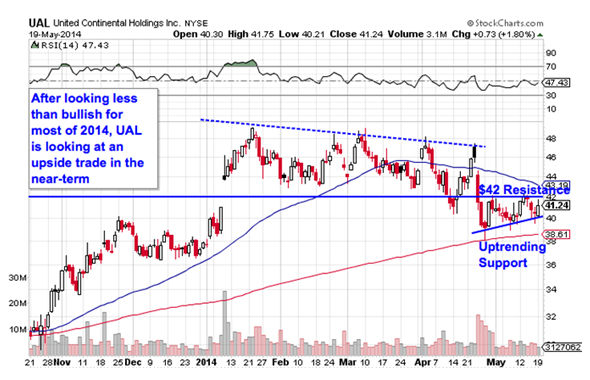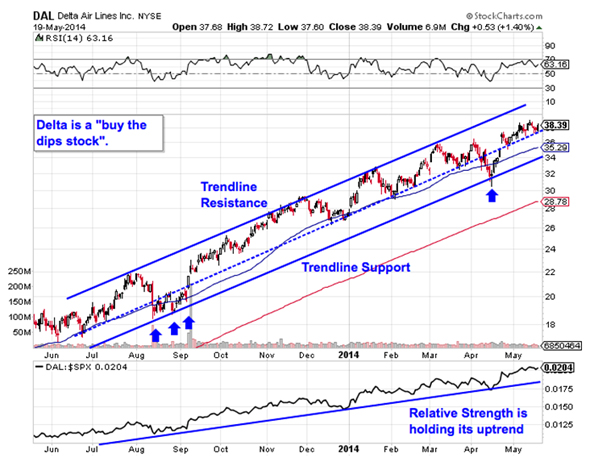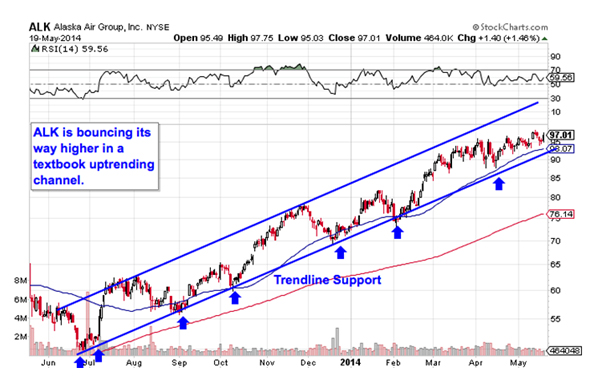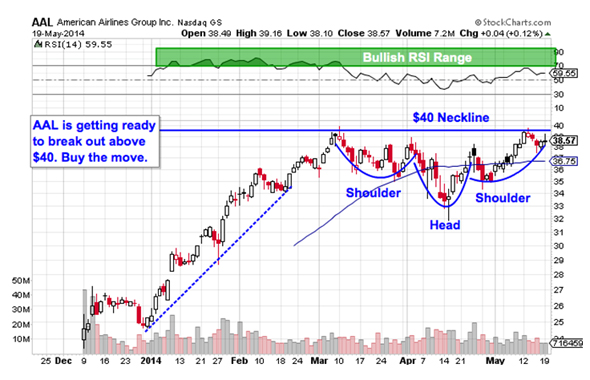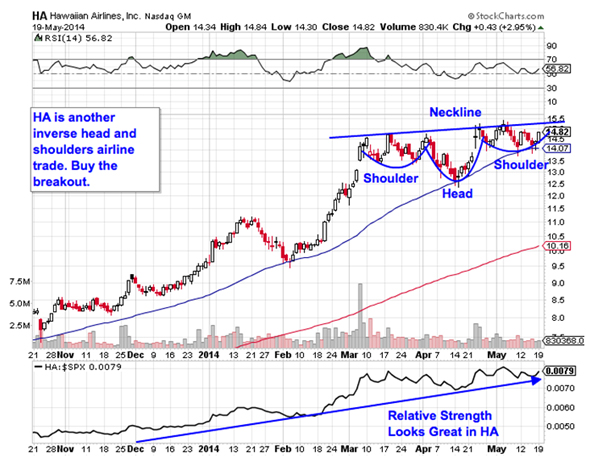DELAFIELD, Wis. (Stockpickr) -- Short-sellers hate being caught short a stock that reports a blowout quarter. When this happens, we often see a tradable short squeeze develop as the bears rush to cover their positions to avoid big losses. Even the best short-sellers know that it's never a great idea to stay short once a bullish earnings report sparks a big short-covering rally.
>>5 Rocket Stocks to Beat a Sideways Market
This is why I scan the market for heavily shorted stocks that are about to report earnings. You only need to find a few of these stocks in a year to help enhance your portfolio returns -- the gains become so outsized in such a short time frame that your profits add up quickly.
That said, let's not forget that stocks are heavily shorted for a reason, so you have to use trading discipline and sound money management when playing earnings short-squeeze candidates. It's important that you don't go betting the farm on these plays and that you manage your risk accordingly. Sometimes the best play is to wait for the stock to break out following the report before you jump in to profit off a short squeeze. This way, you're letting the trend emerge after the market has digested all of the news.
Of course, sometimes the stock is going to be in such high demand that you risk missing a lot of the move by waiting. That's why it can be worth betting prior to the report -- but only if the stock is acting technically very bullish and you have a very strong conviction that it is going to rip higher. Just remember that even when you have that conviction and have done your due diligence, the stock can still get hammered if The Street doesn't like the numbers or guidance.
>>3 Stocks Rising on Unusual Volume
If you do decide to bet ahead of a quarter, then you might want to use options to limit your capital exposure. Heavily shorted stocks are usually the names that make the biggest post-earnings moves and have the most volatility. I personally prefer to wait until all the earnings-related news is out for a heavily shorted stock and then jump in and trade the prevailing trend.
With that in mind, here's a look at several stocks that could experience big short squeezes when they report earnings this week.
J.C. Penney
My first earnings short-squeeze trade idea is department store player J.C. Penney (JCP), which is set to release numbers on Thursday after the market close. Wall Street analysts, on average, expect J.C. Penney to report revenue of $2.71 billion on a loss of $1.25 per share.
Recently, Sterne Agee's Charles Grom said: "While we remain neutral and concerned structurally on J.C. Penney's position in the retail food chain, we see a scenario where the stock could rally in the near term. Improving trends sequentially in the first quarter/second quarter to date coupled with significantly higher gross profit margin year-over-year could boost better than expected results. Layer in an upbeat conference call and the ingredients are there for a move higher in the short term."
>>5 Stocks Ready to Break Out
The current short interest as a percentage of the float for J.C. Penney is extremely high at 30%. That means that out of the 290.61 million shares in the tradable float, 90.89 million shares are sold short by the bears. If the bulls get the earnings news they're looking for, then shares of JCP could easily explode sharply higher post-earnings as the bears jump to cover some of their bets.
From a technical perspective, JCP is currently trending above both its 50-day and 200-day moving averages, which is bullish. This stock has been uptrending over the last month, with shares moving higher from its low of $7.04 to its intraday high of $9.50 a share. During that uptrend, shares of JCP have been consistently making higher lows and higher highs, which is bullish technical price action. That move has now pushed shares of JCP within range of triggering a major breakout trade post-earnings.
If you're bullish on JCP, then I would wait until after its report and look for long-biased trades if this stock manages to break out above some past overhead resistance at $10.30 a share with high volume. Look for volume on that move that hits near or above its three-month average volume of 22.36 million shares. If that breakout hits, then JCP will set up to re-test or possibly take out its next major overhead resistance levels at $13 to $14 a share, or even $15 a share.
I would simply avoid JCP or look for short-biased trades if after earnings it fails to trigger that breakout and then drops back below its 50-day moving average of $8.49 a share high volume. If we get that move, then JCP will set up to re-test or possibly take out its next major support levels at $8.03 to $7.50 a share. Any high-volume move below those levels will then give JCP a chance to re-test or possibly take out $7 a share. Traders should make note that a large gap sits right below $7 a share, so JCP could drop sharply if it moved into that gap with heavy downside volume.
Kate Spade
Another potential earnings short-squeeze play is premium brand apparel and accessories marketer and designer Kate Spade (KATE), which is set to release its numbers on Wednesday before the market open. Wall Street analysts, on average, expect Kate Spade to report revenue $201.85 million on a loss of 4 cents per share.
Recently, Nomura Securities issued a buy rating on shares of KATE with a price target of $41 per share, citing double-digit gains in North American retail expansion and wholesale growth as well as international expansion.
>>4 Big Stocks on Traders' Radars
The current short interest as a percentage of the float for Kate Spade & Company is notable at 6%. That means that out of the 122.92 million shares in the tradable float, 7.39 million shares are sold short by the bears. The bears have also been increasing their bets from the last reporting period by 6.8%, or by about 472,000 shares. If the bears get caught pressing their bets into a bullish quarter, then shares of KATE could easily soar sharply higher post-earnings as the shorts rush to cover some of their positions.
From a technical perspective, KATE is currently trending above its 200-day moving average and just below its 50-day moving average, which is neutral trendwise. This stock has been uptrending a bit over the last month, with shares moving higher from its low of $31.27 to its recent high of $36.32 a share. During that uptrend, shares of KATE have been consistently making higher lows and higher highs, which is bullish technical price action. That move has now pushed shares of KATE within range of triggering a major breakout trade post-earnings.
If you're in the bull camp on KATE, then I would wait until after its report and look for long-biased trades if this stock manages to break out above some near-term overhead resistance levels at its 50-day moving average of $35.76 to some more near-term resistance at $36.32 a share with high volume. Look for volume on that move that hits near or above its three-month average action of 2.14 million shares. If that breakout hits, then KATE will set up to re-test or possibly take out its next major overhead resistance level at its 52-week high of $40.75 a share.
I would simply avoid KATE or look for short-biased trades if after earnings it fails to trigger that breakout and then drops back below some key near-term support levels at $33.24 to $32.77 a share with high volume. If we get that move, then KATE will set up to re-test or possibly take out its next major support levels at $31.27 to its 200-day moving average of $30.22 a share. If that 200-day gets taken out with volume, then KATE could easily tag $28 to $27 a share.
Take-Two Interactive Software
Another potential earnings short-squeeze candidate is video game developer and publisher Take-Two Interactive Software (TTWO), which is set to release numbers on Tuesday after the market close. Wall Street analysts, on average, expect Take-Two Interactive Software to report revenue of $202.51 million on earnings of 10 cents per share.
Recently, Wedbush released a note to investors that said: "We expect a Q4 EPS upside from strong sales of Grand Theft Auto V, NBA 2K14, and digital including GTA Online. Our current estimates are for revenue of $210 million and EPS of 15 cents per share vs. consensus of $202 million and 10 cents per share, and guidance of $170-$200 million." The firm has a neutral rating on the stock with a $19 per share price target.
>>5 Stocks Under $10 Set to Soar
The current short interest as a percentage of the float for Take-Two Interactive Software is pretty high at 12%. That means that out of the 79.01 million shares in the tradable float, 9.99 million shares are sold short by the bears. If this company can deliver the earnings news the bulls are looking for, then shares of TTWO could easily rip sharply higher post-earnings as the bears rush to cover some of their trades.
From a technical perspective, TTWO is currently trending above its 200-day moving average and just below its 50-day moving average, which is neutral trendwise. This stock has been uptrending a bit over the last three months and change, with shares moving higher from its low of $16.40 to its recent high of $22.41 a share. During that move, shares of TTWO have been making mostly higher lows and higher highs, which is bullish technical price action. Shares of TTWO are now trending very close to triggering a big breakout trade post-earnings above some key near-term overhead resistance levels.
If you're bullish on TTWO, then I would wait until after its report and look for long-biased trades if this stock manages to break out above some near-term overhead resistance levels at $21.73 to $22.21 a share and then once it takes out its 52-week high at $22.41 a share with high volume. Look for volume on that move that hits near or above its three-month average action of 2.10 million shares. If that breakout starts post-earnings, then TTWO will set up to enter new 52-week-high territory, which is bullish technical price action. Some possible upside targets off that move are $28 to $30 a share.
I would avoid TTWO or look for short-biased trades if after earnings it fails to trigger that breakout and then drops back below some key near-term support levels at $20.20 to $19.18 a share with high volume. If we get that move, then TTWO will set up to re-test or possibly take out its next major support level at its 200-day moving average of $18.64 a share.
Epizyme
Another earnings short-squeeze prospect is biopharmaceutical player Epizyme (EPZM), which is set to release numbers on Tuesday after the market close. Wall Street analysts, on average, expect Epizyme to report revenue of $8.48 million on a loss of 47 cents per share.
>>5 Big Charts Ready to Break Out in May
The current short interest as a percentage of the float for Epizyme is extremely high at 23%. That means that out of the 10.58 million shares in the tradable float, 2.67 million shares are sold short by the bears. This is a large short interest on a stock with a very low tradable float. Any bullish earnings news could easily spark a sharp short-covering rally post-earnings as the bears rush to cover some of their bets.
From a technical perspective, EPZM is currently trending below both its 50-day and 200-day moving averages, which is bearish. This stock has been trending sideways for the last month and change, with shares moving between $18.75 on the downside and $24.50 on the upside. Shares of EPZM have started to bounce off the lower-end of its range of late and the stock is now starting to trend within range of triggering a breakout trade post-earnings above the upper-end of that recent range.
If you're bullish on EPZM, then I would wait until after its report and look for long-biased trades if this stock manages to break out above some near-term overhead resistance levels at $23.53 to $24.50 a share with high volume. Look for volume on that move that hits near or above its three-month average action of 313,938 shares. If that breakout hits, then EPZM will set up to re-test or possibly take out its next major overhead resistance levels at its 200-day moving average of $29.19 a share to $29.50 a share. Any high-volume move above those levels will then give EPZM a chance to tag $33 to $34 a share.
I would simply avoid EPZM or look for short-biased trades if after earnings it fails to trigger that breakout and then drops back below some key near-term support levels at $20.49 to $19.91 a share with high volume. If we get that move, then EPZM will set up to re-test or possibly take out its next major support levels at $18.75 to its 52-week low of $18.10 a share. Any high-volume move below those levels will then push shares of EPZM into new 52-week-low territory, which is bearish technical price action.
GasLog
My final earnings short-squeeze play liquefied natural gas shipping player GasLog (GLOG), which is set to release numbers on Wednesday before the market open. Wall Street analysts, on average, expect GasLog to report revenue of $58.81 million on earnings of 17 cents per share.
The current short interest as a percentage of the float for GasLog stands at 4.3%. That means that out of the 38.17 million shares in the tradable float, 1.59 million shares are sold short by the bears. The bears have also been increasing their bets from the last reporting period by 42.5%, or by about 475,000 shares. If the bears get caught pressing their bets into a strong quarter, then shares of GLOG could easily jump sharply higher post-earnings as the shorts move to cover some of their trades.
From a technical perspective, GLOG is currently trending above both its 50-day and 200-day moving averages, which is bullish. This stock has been uptrending strong for the last six months, with shares moving higher from its low of $14.92 to its recent high of $28.89 a share. During that uptrend, shares of GLOG have been consistently making higher lows and higher highs, which is bullish technical price action. That move has now pushed shares of GLOG within range of triggering a major breakout trade.
If you're in the bull camp on GLOG, then I would wait until after its report and look for long-biased trades if this stock manages to break out above its all-time high at $28.89 a share with high volume. Look for volume on that move that hits near or above its three-month average volume of 1.15 million shares. If that breakout triggers post-earnings, then GLOG will set up to enter new all-time-high territory, which is bullish technical price action. Some possible upside targets off that breakout are $35 to $40 a share.
I would avoid GLOG or look for short-biased trades if after earnings it fails to trigger that breakout, and then drops back below its 50-day moving average of $25.19 a share to some more near-term support at $25 a share with high volume. If we get that move, then GLOG will set up to re-test or possibly take out its next major support levels at $23 to $20 a share.
To see more potential earnings short squeeze plays, check out the Earnings Short-Squeeze Plays portfolio on Stockpickr.
-- Written by Roberto Pedone in Delafield, Wis.
RELATED LINKS:
>>5 Tech Stocks Entering Breakout Mode This Week
>>3 Stocks Breaking Out on Big Volume
>>5 Toxic Stocks to Sell Now
Follow Stockpickr on Twitter and become a fan on Facebook.
At the time of publication, author had no positions in stocks mentioned.
Roberto Pedone, based out of Delafield, Wis., is an independent trader who focuses on technical analysis for small- and large-cap stocks, options, futures, commodities and currencies. Roberto studied international business at the Milwaukee School of Engineering, and he spent a year overseas studying business in Lubeck, Germany. His work has appeared on financial outlets including
CNBC.com and Forbes.com.
You can follow Pedone on Twitter at www.twitter.com/zerosum24 or @zerosum24.
